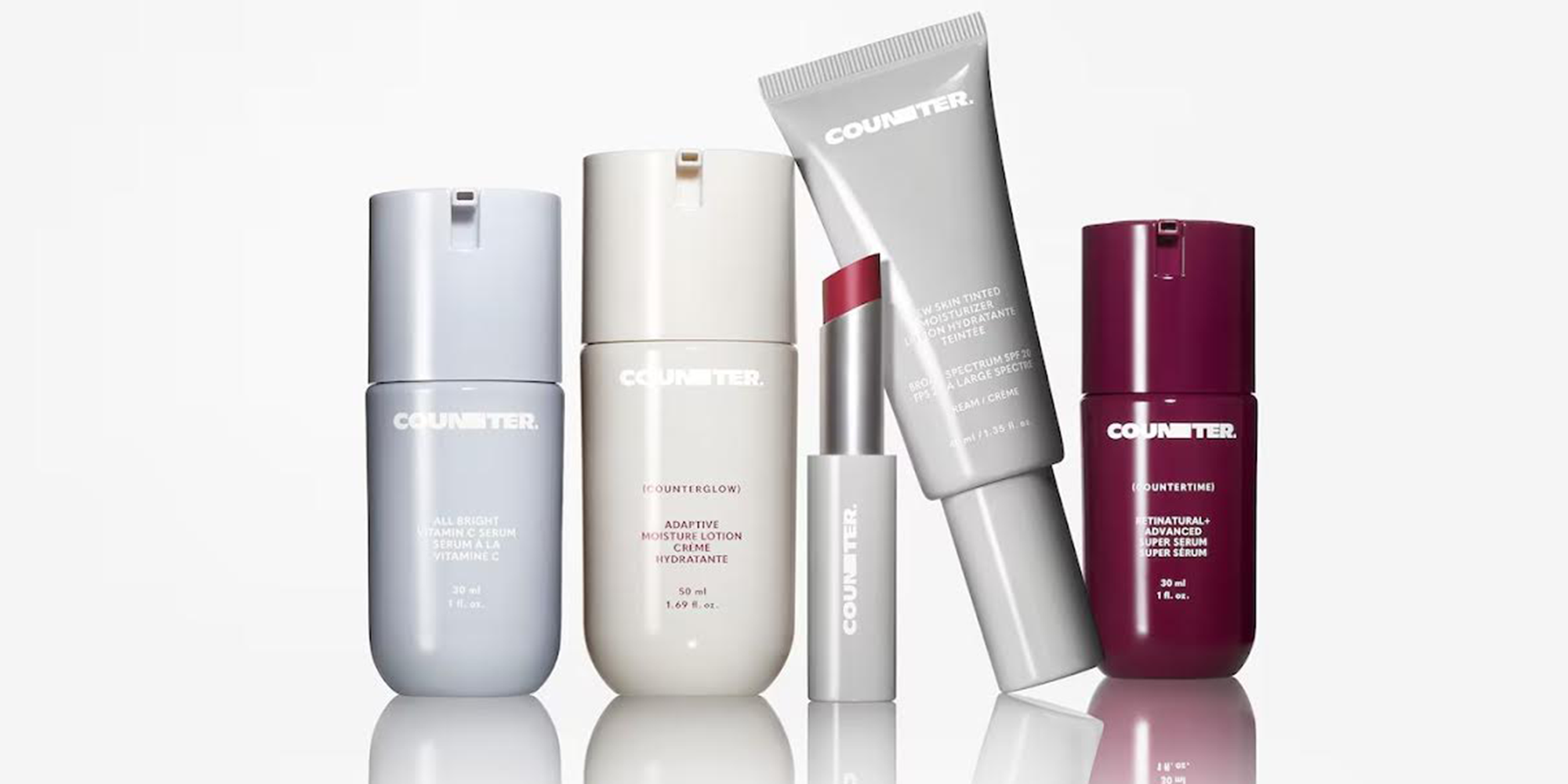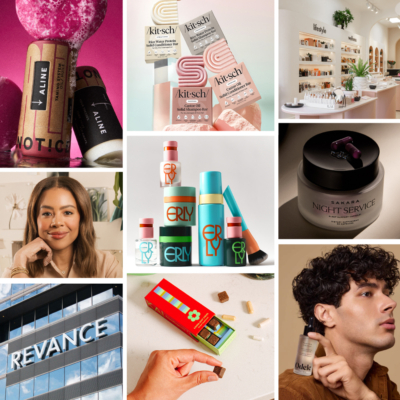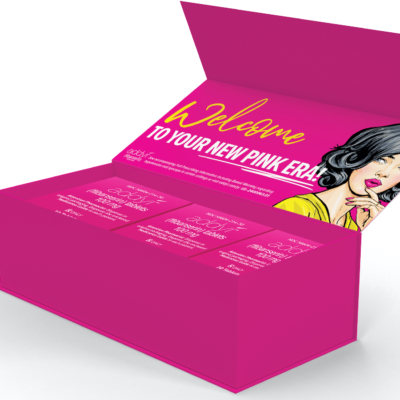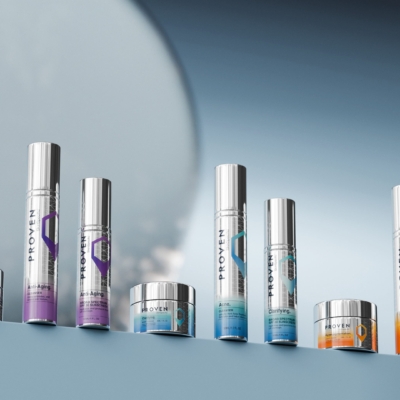
How Counter’s New Affiliate Model Stacks Up Against Beautycounter’s Direct Sales Setup
It’s official: Beautycounter is back. In a way, at least.
While brand devotees are thrilled to see some of their favorite formulas back in stock, the company they’re buying their Countertime from is ultimately new, and differs from the now-shuttered former organization in major ways. For one, the word “Beauty” was dropped from the official brand name—it’s just Counter now. Brand “advocates” or “consultants” are now called “brand partners.” The controversial direct sales setup has also disappeared, a shift that’s right in line with many similar brands’ trajectories. In its place is a “community commerce” model that clients seem (mostly) thrilled to see at work.
The New Model
There’s no cost to join Counter as a brand partner. Once enrolled, the applicant simply receives a unique, shareable link that their community can use to place orders. They’ll earn 20% commission on returning customers’ orders and 40% commission on a new customer’s first order with no activity requirements to keep their role. Counter currently offers 17 skincare and color products priced from $36 to $98.
Though it’s easy to call the setup an affiliate model—these unique codes are what we’d call affiliate codes, after all—there’s a reason founder Gregg Renfrew chose the “community commerce” moniker. The “community” refers to the brand trips and events that partners will have access to.
“Counter is rooted in our mission to lead the clean future and definitive standard in clean beauty. Community rooted in real connection is important to us at Counter, and to our brand partners to advance our mission,” shared the brand when announcing their launch. “We’ll offer brand partners in-person events, trips, advocacy opportunities and thoughtful programming designed to build meaningful relationships.”
Bonuses are also available. If someone sells between $500-1,499 monthly, they’ll earn an additional 5% commission on their monthly sales. Selling over $1,500 monthly will earn them an additional 10% commission.
Some shades of the former model remain. If a Counter brand partner is still in the business of building the community and sharing the company’s mission, she or he can earn exclusive bonuses by referring others to the brand partner program. If a brand partner refers someone that then sell over $250, the referring partner gets a one-time $100 bonus. Any brand partner that does so 10 times receives an additional bonus of $500.
Affiliate Models Abound
Affiliate marketing is everywhere. It’s rare in 2025 to find a content creator without a Linktree posted on all social media profiles brimming with curated shops on Amazon, LTK, ShopMy, etc. Globally, the affiliate marketing industry was valued at over $18.5 billion in 2024 and is expected to grow at a rate of 8% through 2031. While fashion makes up the lion’s share of affiliate sales, beauty is committed to the opportunity. At a recent NielsenIQ C360 event, the beauty e-commerce world’s commitment to “social selling” was a major topic of conversation. They reported that over 45% of beauty sales are happening online. TikTok Shop, which is spearheaded by individual sellers, has experienced a 35% growth in monthly sales in just 1.5 years.
Counter isn’t the only consumer goods company to take the affiliate, or community commerce, route. Gone are the days of traditional direct sales uplines and downlines. They’ve been forced out by public controversy, well-chronicled in documentaries like “LuLaRich” and innumerable Reddit threads. Affiliate marketing is not only free from the negative connotations associated with direct selling and MLMs, but is also an easier, more accessible option for companies as well as wannabe salespeople, especially in 2025. A TikTok user can become a TikTok Shop seller with a mere 1,000 followers.
According to a survey by Direct Selling News, 67% of the direct sales companies they talked to were either contemplating or had already implemented an enhanced affiliate sales model. Rodan + Fields announced they would transition from direct sales to affiliate last July, with their Brand Consultants earning a 30% affiliate commission on all sales with no limit.
“This shift will help us reach a broader audience, allowing brand lovers to shop from our website or purchase from our Brand Consultants,” the brand shared in a blog post announcing the change.
SimplyFun, Pure Romance, Beachbody and doTerra have also gone this route, while other brands have simply added on an affiliate model to their current sales setup. Tubby Todd even has its own version of brand partners, an ambassador program that they call “Mamas Who Know” where members are encouraged to connect with one another over their love for the brand.
“Think of it as a totally different company.”
New Model Controversy
Can someone actually make a business out being a brand partner, or whatever another brand might call the role? It depends on your platform, and how hard you’re willing to work.
“With the new model of Counter, it can be as profitable as it was if you focus on personal sales,” says TeriLyn Adams, a blogger based in North Carolina who has over ten years of experience with both affiliate and direct sales selling models. “Do they want to make $1,000 a month, or do they want to make $100,000 a year? I think it depends on how they define success, how much they’re willing to work, how big their existing platform is, and how they plan to grow. I mean, anything’s possible.”
“A year ago, ‘affiliate’ was very taboo,” Adams adds. “[With some exceptions], direct typically has a much higher commission rate than the affiliates that I work with. The other thing with direct is you earn a percentage off your downline. Affiliate is obviously just you.”
Unless you have a large platform, it’s unlikely you’d see major success sharing an affiliate code from just one brand right away. Counter or otherwise. “The people I feel like that are really upset are those that had big teams and made a lot of money from their teams, because that’s simply not there,” the expert notes. Her best advice, for those who are angry about the change, is to let go of what Beautycounter was. It’s Counter now, and things aren’t going to be the same.
“Think of it as a totally different company,” she says. “I just think people need to move on, and that’s it. I understand there are livelihoods affected, but it’s much more complicated than that.”
Having personally experienced a financial hit from the Beautycounter shutdown, Adams isn’t being cavalier. She just thinks her former colleagues need to realize that there’s nothing that can be done now.
“Decide to just lean in with what it is, or walk away, or just do it on the side. I think you just have to let go of what it was, because it’s not that anymore,” she says. “If you want to build a business with it, I think the best thing you can do for any business is just be totally transparent and show yourself using the products. I don’t think it’s that complicated. I think where people get into trouble with direct sales is when they overthink it.”
The Former Model
In the beginning, Beautycounter operated on a direct sales, upline-downline model in addition to offering direct-to-consumer sales. At one point, it boasted 60,000 direct salespeople, and when the brand launched at Ulta Beauty in 2023 sellers expressed frustration at the new competition.
However, their anger didn’t have a chance to last long. The company folded within a year, right before Renfrew bought the name, assets, and formulas that she, alongside a number of investors, transformed into what we now know as Counter.
Adams has a background in finance, and had a hunch that Beautycounter would make its return with an affiliate model—especially because they didn’t push the “team” aspect super hard to begin with. Though they no longer apply to Counter, her compensation model breakdown and “honest look at being a Beautycounter consultant” blog posts have long been a great resource for the Beautycounter curious.
“As a Beautycounter Consultant, you earn 25% on products you sell. This is the most basic way to earn an income. Then as your overall personal volume grows, you can earn up to 35% commission on sales,” she wrote in an old post titled Beautycounter Compensation Plan Explained. “As your team grows (often called your downline) and sells product, you’ll get a small commission of those sales as well. It doesn’t reduce the amount that your downline consultant earns. You start out getting 5% commission of your team’s sales and that can grow to 9-12% as you promote to new ‘Paid-As’ titles. If you are looking for a multilevel marketing or mlm review, this post won’t compare different compensation plans since I don’t know what other companies do. But I think other companies more commonly pay you MORE on a team and less on your own sales, which is why they really push growing a team. Beautycounter is the opposite.”
The big hit for many returning Counter sellers, then, is the disappearance of the “team” structure they had and pay that came with it. Brand advocates only receive commission on products they personally sell ,compared to a percentage of the sales from their former downline. While someone without a downline wouldn’t see much of a difference with this new setup, those at the top of the line might lose a significant chunk of their income.
Another difference: Though Beautycounter advocates never had to pre-purchase inventory, they were able to have a closer hand in selling to friends if they so chose to. Besides the loss of their downline, the brand partners are no longer able to place orders for their clientele. Instead, someone who wants to shop will have to order through the individual link every time they make a purchase.
While easy enough, it’s worth noting that the ease of purchase was a big selling point for shoppers previously. If they need to do the work themselves, who’s to say if they’ll go through the motions of using a specific link.
The Response
On Wednesday, June 25, the long-teased Counter website officially went live for the general public.
Depending what side of the beauty news algorithm you’re on, your feed might’ve been full of previous sales people excited to get back in the groove as Counter brand partners, or those who decided to leave their Beautycounter business in the past. While the former were most prevalent—especially if you comb through the comments on the brand or founder Gregg Renfrew’s social media pages—some weren’t so thrilled.
In a post shared to Instagram on June 27, influencer and former Beautycounter rep Stacy Toth shared her thoughts on the new brand. “I was 100% all in on going back,” she shared in a video. However, after attending a “town hall” where she learned more about the new company, she decided to back out. “For me [it was] very clear that it was going to be a lot of the same things I didn’t like without the positive things I did like.”
Some sellers are more sanguine about the shift. “The business model is different this time around. We are no longer a direct sales company. It’s basically an affiliate program that offers super generous commissions and referral bonuses,” explained a public Facebook post by seller Madeline Lopp. “I’d love to do this with you!! [ … ] I am so pumped to continue advocating for safer and cleaner products. I am excited to be your clean beauty gal again!!”




